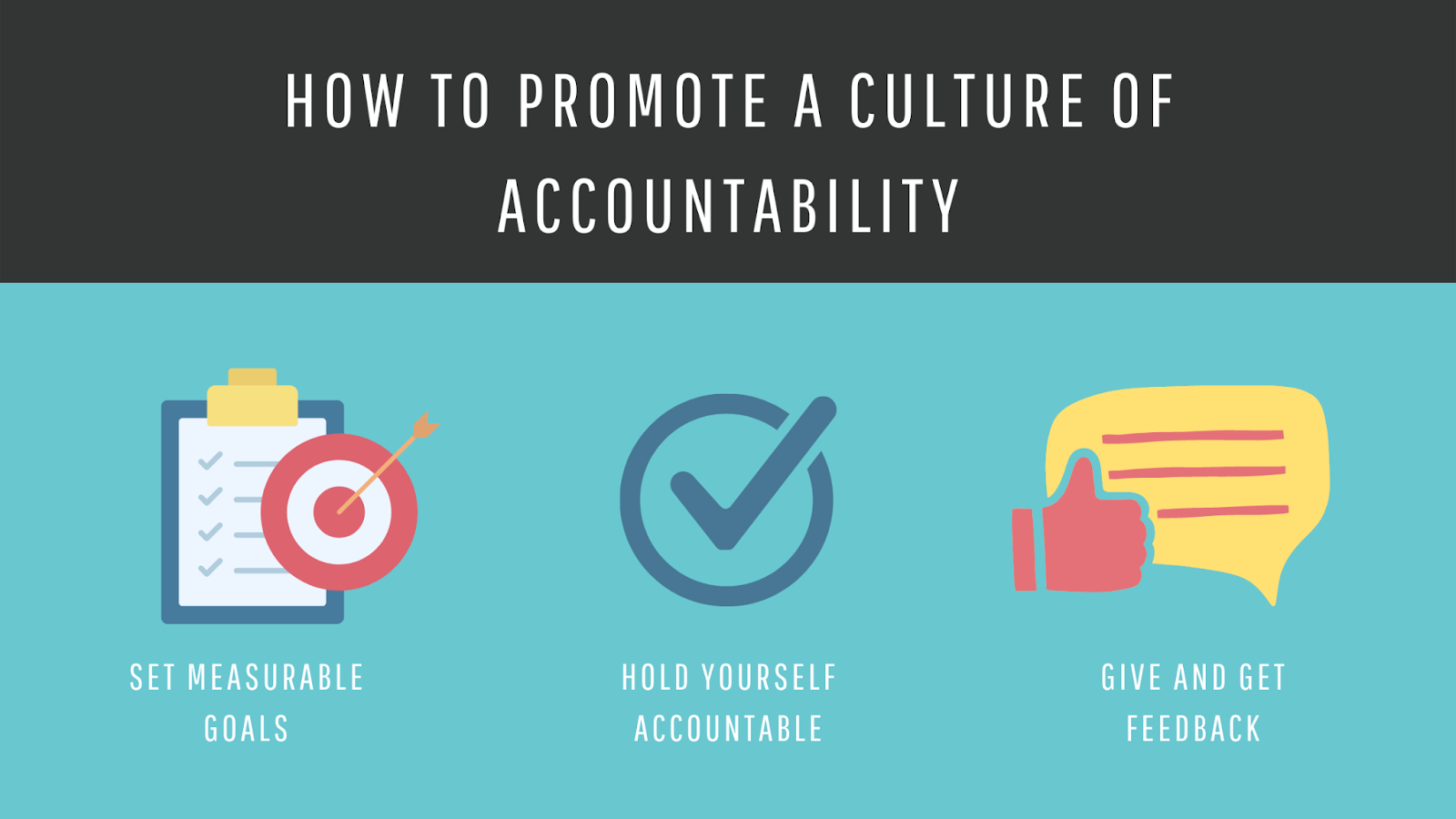
“We are accountable and honor our commitments.” That is one of our seven core values at Hartman Income REIT Management Inc. (Hartman), and it is one we take quite seriously. In practice, it means that every member of our team will take accountability, keep their word at all times and never make excuses.
In this blog post, we are going to explore this core value and how it has helped Hartman foster a culture of accountability. You will come away from this with actionable insights that you can implement at your own organization to promote accountability as an essential trait. Continue reading to learn more about this vital topic.
What Does It Mean to Take Accountability?
You often hear about “taking responsibility,” but what do we mean when we say “take accountability?”
Accountability vs. Responsibility
The distinction is an important one, and while accountability and responsibility are both essential traits of any successful organization, they are not the same thing.
Accountability
Accountability is about taking ownership of the outcome. The outcome could be in relation to a simple interaction with a customer or a massive, multi-department project. In either extreme, you own the results if you want to take accountability.
For example, a manager should own the results of a project his department is engaged in. To truly participate in a culture of accountability, the manager would take accountability for the results of the project whether they were positive or negative, and they would never point the blame elsewhere.
Responsibility
Responsibility, on the other hand, is about taking ownership of your role within the organization, project or team. The distinction between accountability vs. responsibility can be difficult to grasp. You can assign responsibility to team members, but they have to take accountability on their own.
It can be helpful to examine a real-world example. If you assigned a big project to one of your department managers, the manager might then look at their team members to assess who has the right strengths for the right roles within the project. Then, they might assign those roles and expect each assignee to be responsible for the duties the role entails.
At the end of the project, the manager might ask each team member to report on how it went, and they would be expected to take accountability for the results of their particular part of the project. In turn, when the manager reported the results of the project to you, they would need to model full accountability, despite the individual victories and losses that occurred across various team members’ responsibilities.
A Culture of Accountability vs. Responsibility
 Accountability is an essential component in the success of any company. That is probably part of the reason why so many business leaders have had so much to say about accountability. One of the best of the many accountability quotes comes from Stephen R. Covey:
Accountability is an essential component in the success of any company. That is probably part of the reason why so many business leaders have had so much to say about accountability. One of the best of the many accountability quotes comes from Stephen R. Covey:
“Accountability breeds response-ability.”
When something goes wrong, people and even major companies are quick to point fingers. That is the polar opposite of taking accountability. Instead, it is the act of asking who else might be responsible for the problem and shrugging the blame from your own shoulders. The result is, almost invariably, a subpar or even harmful response to the situation.
Accountability means that we acknowledge the impacts the quality of our own work and working relationships have on others. That acknowledgement leads to responsibility for our actions and acceptance of the outcome of those actions — positive or negative — on both us and those around us.
In today’s society, finding people and organizations that truly take accountability when things go wrong is difficult. Although it is disheartening, it is not difficult to understand why this happens. It is easier to skate by when you operate outside of a culture of accountability. It is less painful, and when it comes to accountability vs. responsibility, the latter is almost always the choice of those who are only focused on the short term — and who will likely meet failure as a result of their inability to take ownership of the outcomes they cause.
What It Means to Take Accountability and Responsibility at Work
Picture a pyramid. The CEO of your company is at the top, the upper management is on the second tier, the department heads are on the third tier and the rest of the employees are on the bottom tier. Where do you think accountability should enter this picture? The answer is clear: from the top down.
The leader of any organization is the most accountable one of the group. That is true whether or not they take accountability because they will ultimately be held accountable for the overall success of the organization. If it fails, it is the leader’s failure. If it succeeds, it is the leader’s success.
It makes sense, then, to pass accountability through the organization from the top and through each tier until it reaches every employee. You do that by modeling total accountability. This is key in your pursuit of excellence in the workplace. Fail to model accountability, and you fail to foster a culture of accountability.
This is more than just a bit of wisdom from a CEO. It is backed up by data. In a major study of more than 40,000 participants, around 84% of surveyed workers said they looked to their organizations’ leaders to understand how to take accountability within their roles. Meanwhile, 80% said they only received feedback on their performance — a key way to both take and give accountability — after the fact, when it was too late to model accountability themselves or change project outcomes.
The ultimate outcome of the issues this study brought to light was that 93% of surveyed workers said they were unable to take accountability for the results their companies desired. This does not have to be a problem that plagues your company; all you have to do is model total accountability in everything you do.
What Does a Workplace of Employees Who Take Accountability Look Like?
We have now explored what a workplace with no accountability looks like, so what does the opposite type of workplace look like? What should you expect your company to look like after you have provided the resources and frameworks for every single employee to model total accountability?
Here are some examples of what you can expect from a workplace in which employees take both accountability and responsibility:
- Customer support. If your customer support team is tasked with keeping response times under a certain number of minutes, each support representative is responsible for responding in a timely manner, but the customer support team’s manager is accountable to upper management for the overall response time of the team.
- Customer service. Customer service is everyone’s responsibility at Hartman and many other successful companies, but who is supposed to take accountability for customer service? Everyone who interacts with a customer. If your actions or inaction lead to poor customer service outcomes, you won’t pass the blame to someone else. You will take accountability.
- Sales. Sales teams have the difficult task of setting goals based on hard numbers that rely on the cooperation of the customer who will actually buy the product or service. That means accountability can be tricky. A salesperson may be responsible for making 50 cold calls per week, for example, but they — and their managers — are accountable for implementing a sales strategy that actually gets results.
- Marketing. In marketing, outcomes can be somewhat nebulous. An ad campaign, for instance, may not lead to many additional sales, but it might work wonders for brand awareness. In other words, measuring responsibility and accountability in marketing is murky, but it follows much the same breakdown as it does in sales. A marketing associate may be responsible for developing marketing assets and campaigns, but their manager is accountable for the overall performance of those campaigns.
- Leadership. Accountability begins and ends with leaders. Company leaders model accountability and expect it from their direct reports. Their direct reports do the same for their teams. How accountability travels down that path is ultimately the concern of the leaders who set the process into motion, and the success of the leader and the organization they associate with depends on the culture of accountability fully taking root.

How to Promote a Culture of Accountability in Your Company
Accountability is essential to the success of any company, and leaders like you are accountable for making accountability a core part of your culture. But how, exactly, do you do that? Here are some ideas to get you started:
- Set measurable goals. Pick a framework that allows team members, departments and the entire company to set goals with measurable steps and results. The Delivery, Accountability, Responsibility, and Timing (DART) framework is a great example of such a model. This allows every employee to see and understand not only their own outcomes, but how their outcomes impact other team members.
- Hold yourself accountable. This is how you model accountability. If you are unable to take accountability for your results even when they are poor, you cannot expect your employees to be able to.
- Give feedback. Do not make employees wait until they have already failed to understand that you see that they are struggling. Give feedback early and often, and remember what you say. If you give feedback on a particular aspect of performance, you need to follow up on the employee’s improvement or lack thereof the next time you give feedback.
- Receive feedback. Feedback should go both ways. If your employees feel empowered to offer feedback, they will in turn feel empowered to hold you and others accountable. That is how you create a culture of accountability within an organization.
Another key piece to this puzzle is making sure you have achieved or are at least close to achieving the fifth stage of leadership, as defined in the book Tribal Leadership. The fifth stage is the one in which you have unified your team under a common goal that is not about being better than a competitor or beating each other, but about making an impact. These are the kinds of goals that foster true accountability in workplaces.
Take Accountability to Take Your Company to the Next Level
Accountability and responsibility are never too far away from each other, but they are not at all the same thing. While responsibility keeps the wheels turning and the lights on, accountability moves your company forward. If we learn to be more accountable, the benefits for our companies and teams will be immeasurable.
To learn more about accountability and leadership in the workplace, read my blog on Achieving Excellence in the Workplace.





